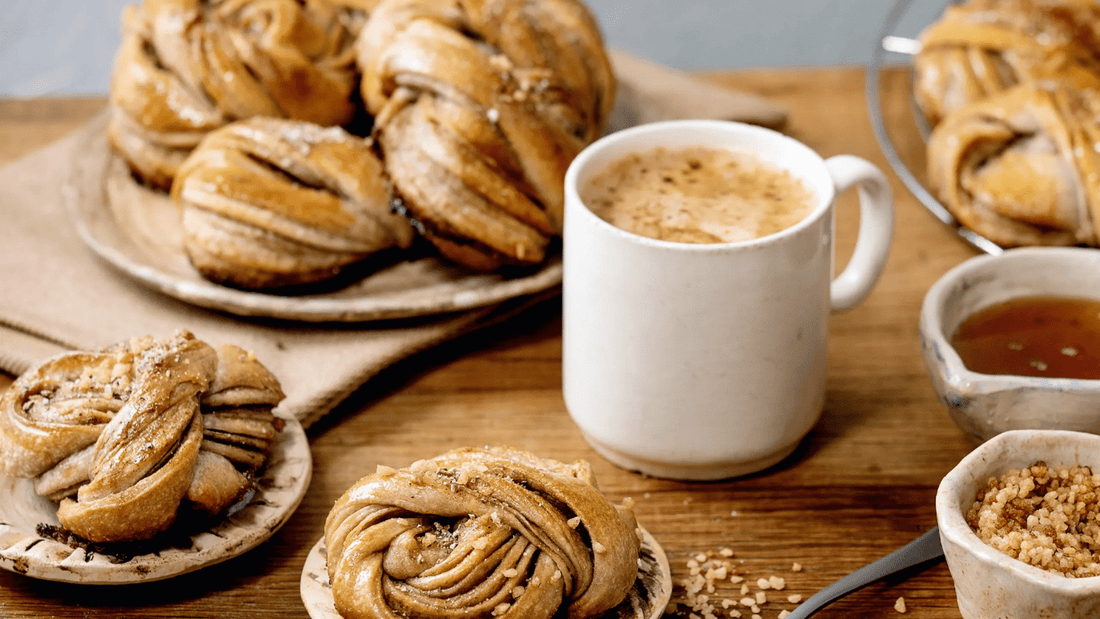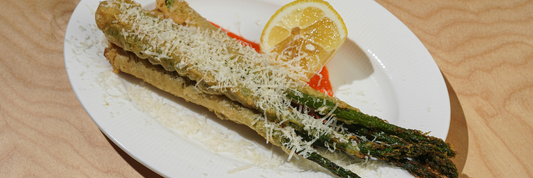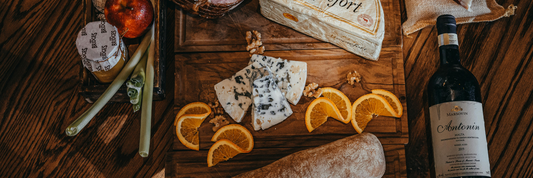In Sweden, coffee is more than a drink, it’s a cherished ritual. At the heart of this culture lies “Fika”, the Swedish tradition of pausing each day to enjoy coffee, conversation, and something sweet. More than a simple break, fika is about slowing down, connecting with others, and appreciating life’s small pleasures.
In this article, we’ll explore the history of Swedish coffee culture, the meaning of fika, and how you can bring this mindful tradition into your daily routine.
What Is Fika in Sweden?

If you’ve ever visited Sweden, you’ve likely heard the word “fika” whispered in cafés, offices, and homes across the country. Pronounced fee-ka, it’s far more than just a “coffee break.”
In Swedish culture, fika is both a noun and a verb, you can “take a fika,” “have a fika,” or “fika together.” At its heart, fika means taking a mindful pause from daily life to share coffee, pastries, and conversation. It’s a ritual deeply rooted in connection, relaxation, and reflection.
Unlike the rushed coffee runs common in many countries, fika is an intentional moment to slow down. Whether shared among coworkers mid-morning or enjoyed with friends in the afternoon, fika is a cornerstone of Swedish identity and lifestyle.
Related: Exploring the Characteristics of Different Types of Coffee Drinks
Why Fika Is Important in Swedish Culture
Fika is more than a pleasant tradition, it’s a philosophy of living. It encourages mindfulness, community, and well-being in a world that often glorifies busyness.
In Sweden, taking time to enjoy fika isn’t considered unproductive; it’s viewed as essential self-care. It helps people slow down, recharge, and connect meaningfully with others.
Whether you’re sipping coffee at a local café or chatting with coworkers in the office kitchen, fika is about being present. It’s a daily reminder that productivity and joy can coexist and that human connection matters as much as output.
The History of Fika: From 19th-Century Sweden to Modern Ritual
The origins of fika date back to the 19th century, when Swedes first developed a love affair with coffee. The term “fika” actually comes from reversing the syllables of the old Swedish word “kaffi” meaning coffee.
Early Beginnings
Coffee was introduced to Sweden in the late 1600s and quickly gained popularity among the upper classes. By the 18th century, coffee houses flourished across cities like Stockholm and Gothenburg, becoming hubs of intellectual and social life.
However, coffee wasn’t always welcomed. The Swedish government actually banned coffee five times between 1756 and 1820, fearing its addictive effects and social influence. Yet, the Swedes’ devotion never waned coffee became a quiet form of rebellion and, over time, an everyday comfort.
Fika’s Evolution
By the early 1900s, fika evolved into a formalized daily ritual. Instead of merely drinking coffee, Swedes began pairing it with pastries and conversation. This wasn’t about caffeine, it was about community.
Today, fika is practiced everywhere in offices, schools, and homes. It’s so ingrained in Swedish life that many workplaces schedule two fika breaks per day, fostering teamwork and emotional balance.

What are the Benefits of Fika Break?
Fika might seem simple but its benefits reach far beyond the coffee cup.
1. Boosts Focus and Creativity
Short, intentional breaks help clear the mind, improve attention, and stimulate creative problem-solving.
2. Strengthens Relationships
Sharing a fika brings people together. It builds trust, encourages conversation, and strengthens team morale.
3. Reduces Stress
Stepping away from screens and engaging in mindful conversation lowers stress levels and supports mental wellness.
4. Improves Workplace Culture
Swedish companies often schedule fika twice a day and research shows that it increases overall employee satisfaction and collaboration.

What Do Swedes Typically Eat and Drink During Fika?
Swedish Coffee Culture (Kaffe in Sweden)
Sweden ranks among the top coffee-consuming nations globally, leading the world in coffee consumption per capita. Traditional Swedish coffee, or “kaffe,” is typically strong, black, and served in small mugs. While espresso may be popular elsewhere, the standard fare in Sweden often consists of light roast, filter coffee simple yet deeply satisfying.
Coffee plays a pivotal role in the fika experience, inviting both everyday enjoyment and moments of shared serenity. The focus is on craftsmanship, quality, and connection, elevating the act of drinking coffee from a mere routine to a cultural ritual.
Common Fika Treats
No fika experience is complete without delicious treats. The most iconic fika pastry is the kanelbulle, or cinnamon bun, which is renowned for its rich flavor and sticky sweetness. Beyond kanelbullar, one might find an array of baked goods such as cardamom rolls, cookies, and sponge cakes all accompanying the coffee or tea.
Some opt for lighter options during fika, such as open-faced sandwiches or fresh fruit, demonstrating that fika encompasses a variety of culinary offerings. The common thread is the spirit of indulgence and connection, making the act of sharing food a key aspect of this tradition.
What Do Swedes Eat During Fika?
No fika is complete without something sweet or at least, something to nibble alongside your coffee.
The Classics
The kanelbulle (cinnamon bun) reigns supreme. Its rich, buttery dough, spiced with cinnamon and cardamom, has become a national icon. Other favorites include:
- Kardemummabullar – cardamom buns with sugar pearls
- Kakor – small butter cookies in endless varieties
- Sockerkaka – light sponge cake, often flavored with vanilla or lemon
- Chokladboll – chocolate oat balls rolled in coconut
These pastries are more than desserts, they symbolize warmth, comfort, and togetherness.
Savory Fika
While sweet treats dominate, fika can also include open-faced sandwiches (smörgås) topped with cheese, ham, or cucumber. Some modern cafés even serve vegan or gluten-free fika plates, reflecting Sweden’s evolving culinary landscape.
Fika vs. a Regular Coffee Break – What’s the Difference?
|
Feature |
Fika (Swedish Style) |
Regular Coffee Break |
|
Purpose |
Pause + connection + food |
Quick energy boost |
|
Food |
Yes – always something sweet |
Not required |
|
Duration |
15–30 minutes |
5–10 minutes |
|
Environment |
Shared, cozy, often ritualized |
Individual, functional |
|
Frequency |
Up to twice a day |
Varies |
The differences between fika and a regular coffee break illustrate the richer context of the Swedish tradition. Fika is about community and experience, while a typical coffee break tends to focus strictly on functionality.
How to Create a Fika Moment at Home or in the Office

Essentials for a Fika Setting
To enjoy a true fika moment, a few essential elements must be present:
- Brewed coffee (or tea)
- Fresh or locally made pastries
- A quiet, device-free atmosphere
- Cozy cups, napkins, and reusable trays
Creating a welcoming environment is crucial to fostering the spirit of fika, where distraction is reduced, and shared enjoyment takes center stage.
Eco-Friendly Fika Tips from Kimecopak
Sustainability fits naturally into the fika lifestyle. At its core, fika celebrates slow living, intentional choices, and local craftsmanship.
- Use reusable mugs or compostable cups instead of disposables.
- Choose local bakeries or bake at home to minimize packaging waste.
- Serve in kraft trays or recyclable boxes to align with low-waste values.
- Buy fair-trade, organic coffee beans to support ethical sourcing.
Related: Compostable Coffee Cups: Eco-Friendly Solutions for Sustainable Cafés and Takeaway Services
FAQs About Fika and Swedish Coffee Culture
What time do Swedes have fika?
Swedes typically enjoy fika twice daily once in the mid-morning (around 10 AM) and again in the mid-afternoon (around 3 PM).
Is fika just coffee and cake?
Not necessarily! While coffee and pastries are traditional, fika can also include tea, fruit, or sandwiches — the essence is the pause and connection.
What’s the difference between fika and afternoon tea?
Afternoon tea is more formal, rooted in British etiquette. Fika is casual, relaxed, and focused on being present rather than performance.
Can I practice fika outside Sweden?
Absolutely. You can enjoy fika anywhere all you need is good coffee, delicious treats, and a willingness to slow down.
What are the best fika treats to serve?
Classic options include cinnamon buns (kanelbullar), cookies, sponge cake, and chocolate balls (chokladbollar).
Conclusion
In Sweden, fika isn’t just about coffee, it’s about connection, balance, and joy. It’s a gentle rebellion against hustle culture, reminding us that slowing down is a form of strength.
Fika transforms a simple coffee break into a meaningful ritual one that unites people, fosters mindfulness, and celebrates the beauty of everyday life.
So the next time you pour yourself a cup of coffee, take a moment to pause. Light a candle. Share a pastry. Have a real conversation.




